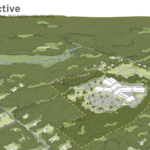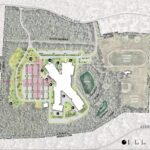Editor’s Note: The views and opinions expressed in this article do not reflect those of the Carver Journal.
Colleen Trahan is a Mattapoisett resident and founder of Whale Rock Consulting, a finance consulting firm in Southeastern Massachusetts.
On November 18 residents of Acushnet, Carver, Lakeville, Mattapoisett, and Rochester will vote on a proposed new facility for Old Colony Regional Vocational school. The proposed facility will replace aging infrastructure, and expand enrollment and trade offerings.
Superintendent Aaron Polansky and the project management team have presented their case for the facility, hosting more than 40 in-person presentations to explain the project, answer questions, and garner voter feedback. Residents now must weigh community investment against the personal cost of real estate tax assessment.
Given the demand for skilled labor and the deficiencies of the current building, a new Old Colony facility is a good investment in the local economy. Expanding trades to offer a complete construction program, along with dental assisting, will benefit the region as a whole, and offer a good, college-optional track for more local students.
Since the doors opened in 1975, the requirements for schools and the technologies used in trades have changed substantially. Square footage requirements for school buildings have increased, and equipment needs have shifted in ways that were not foreseen at that time (for example, the need for a data center and supporting HVAC system). Also, construction of commercial buildings in the 1970s was of particularly low quality given a decline in construction labor productivity and the choice of materials used during that time.
The current state of the facility is not meeting the needs of students, or the regional economic demands. As noted in the project presentation, the spatial limitations and deteriorated conditions of the building “led directly to this project being selected for the [Massachusetts School Building Authority] program.” And the additional proposed trade offerings of plumbing, HVAC, and dental assisting were informed by the 2024 South East Regional Workforce Blueprint.
The report was published by the Southeast Regional Planning team, a consortium of regional authorities that provides expertise on labor trends and economic needs of the region. The demand for vocational education is strong. Higher education is increasingly unaffordable, and vocational training offers a good path to well-paying jobs.
The region is also experiencing an unprecedented demand for skilled labor at a time when many laborers are aging out of the workforce. Currently, Old Colony is able to accommodate fewer than half of applicants, a statistic we should all consider unacceptable.
There is, however, reasonable cause for concern about the cost.
The new facility will increase real estate taxes in the district communities for the duration of the bond, which will be a hardship for some households – the estimated annual impact for the average single family home will be between $450-$720 for towns with higher enrollment, and between $120-$320 for towns with lower enrollment. And there is the real possibility of other schools in district communities requiring substantial maintenance or replacement during this time, compounding financial stress.
But forgoing the new facility and instead incurring the cost of maintenance to bring the school up to a satisfactory condition is nearly as expensive as the new facility itself. The district would be forgoing the near-term MSBA investment of nearly $130M, and the cost of replacement will undoubtedly be more expensive at a later date.
The choice facing voters on November 18 is not between spending and saving, but between investing now or paying more later. A vote for the new Old Colony facility is a vote for regional economic resilience. It ensures that local students have access to high-quality career training and that regional employers can find the skilled workers they need. The trades being added—plumbing, HVAC, and dental assisting—are not arbitrary additions but direct responses to documented workforce shortages in our region.
Fifty years ago, our communities built the Old Colony school. That investment has served generations of students and strengthened our regional economy. Now, as we face a skilled labor shortage and a building that can no longer meet modern needs, we have the opportunity to make that investment again—and to do so with substantial state partnership. The question is not whether we can afford to build a new facility, but whether we can afford not to.
Want to publish your opinion? Submit a piece to opinions@carverjournal.com


